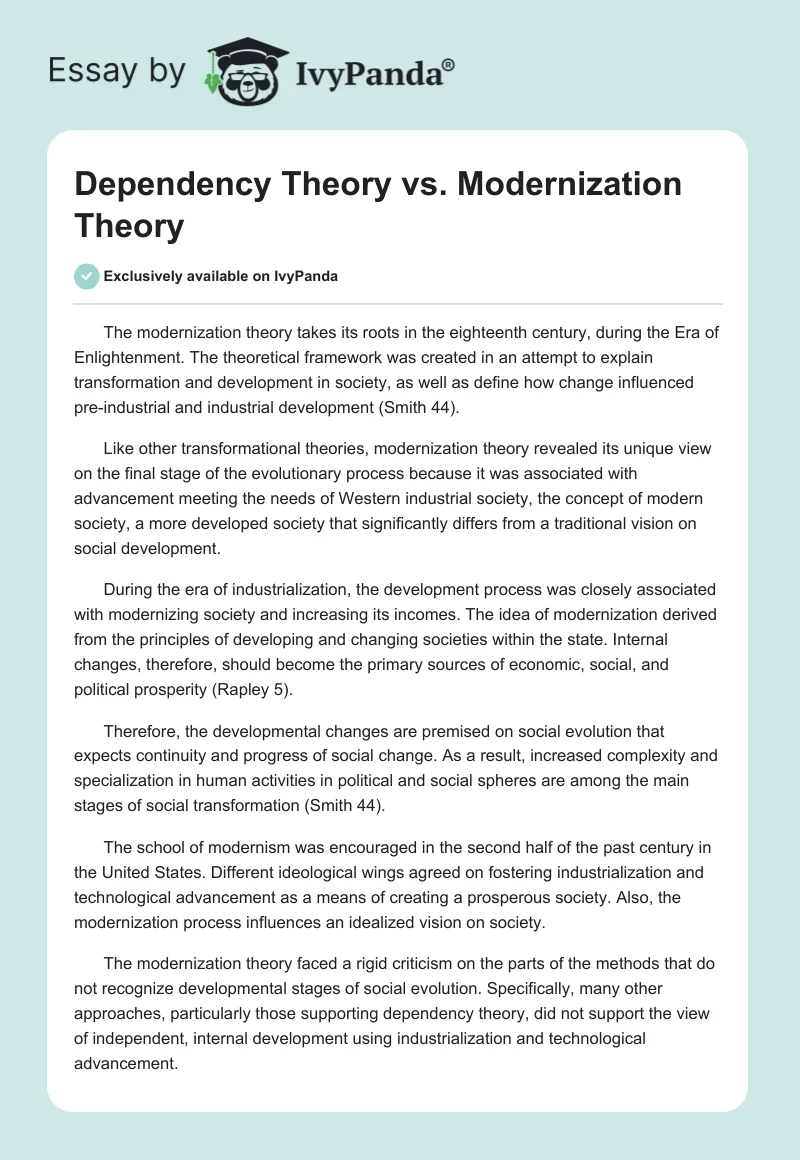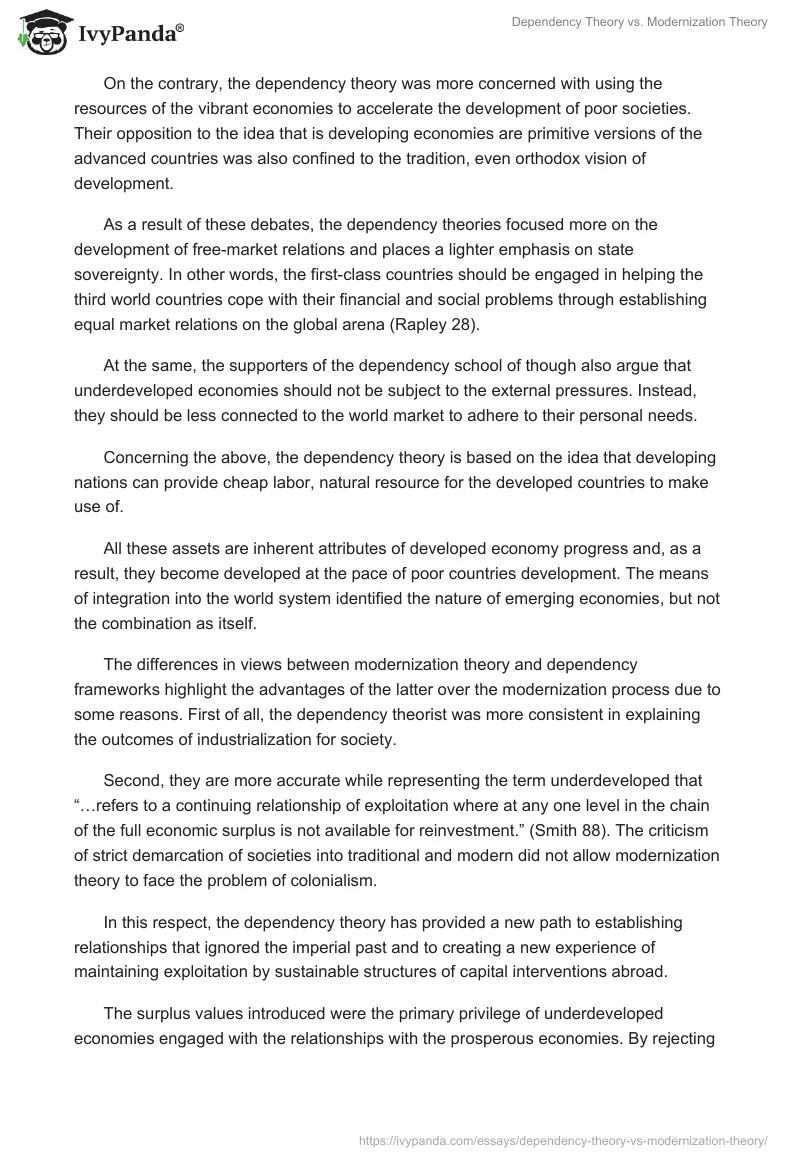The modernization theory takes its roots in the eighteenth century, during the Era of Enlightenment. The theoretical framework was created in an attempt to explain transformation and development in society, as well as define how change influenced pre-industrial and industrial development (Smith 44).
Like other transformational theories, modernization theory revealed its unique view on the final stage of the evolutionary process because it was associated with advancement meeting the needs of Western industrial society, the concept of modern society, a more developed society that significantly differs from a traditional vision on social development.
During the era of industrialization, the development process was closely associated with modernizing society and increasing its incomes. The idea of modernization derived from the principles of developing and changing societies within the state. Internal changes, therefore, should become the primary sources of economic, social, and political prosperity (Rapley 5).
Therefore, the developmental changes are premised on social evolution that expects continuity and progress of social change. As a result, increased complexity and specialization in human activities in political and social spheres are among the main stages of social transformation (Smith 44).
The school of modernism was encouraged in the second half of the past century in the United States. Different ideological wings agreed on fostering industrialization and technological advancement as a means of creating a prosperous society. Also, the modernization process influences an idealized vision on society.
The modernization theory faced a rigid criticism on the parts of the methods that do not recognize developmental stages of social evolution. Specifically, many other approaches, particularly those supporting dependency theory, did not support the view of independent, internal development using industrialization and technological advancement.
On the contrary, the dependency theory was more concerned with using the resources of the vibrant economies to accelerate the development of poor societies. Their opposition to the idea that is developing economies are primitive versions of the advanced countries was also confined to the tradition, even orthodox vision of development.
As a result of these debates, the dependency theories focused more on the development of free-market relations and places a lighter emphasis on state sovereignty. In other words, the first-class countries should be engaged in helping the third world countries cope with their financial and social problems through establishing equal market relations on the global arena (Rapley 28).
At the same, the supporters of the dependency school of though also argue that underdeveloped economies should not be subject to the external pressures. Instead, they should be less connected to the world market to adhere to their personal needs.
Concerning the above, the dependency theory is based on the idea that developing nations can provide cheap labor, natural resource for the developed countries to make use of.
All these assets are inherent attributes of developed economy progress and, as a result, they become developed at the pace of poor countries development. The means of integration into the world system identified the nature of emerging economies, but not the combination as itself.
The differences in views between modernization theory and dependency frameworks highlight the advantages of the latter over the modernization process due to some reasons. First of all, the dependency theorist was more consistent in explaining the outcomes of industrialization for society.
Second, they are more accurate while representing the term underdeveloped that “…refers to a continuing relationship of exploitation where at any one level in the chain of the full economic surplus is not available for reinvestment.” (Smith 88). The criticism of strict demarcation of societies into traditional and modern did not allow modernization theory to face the problem of colonialism.
In this respect, the dependency theory has provided a new path to establishing relationships that ignored the imperial past and to creating a new experience of maintaining exploitation by sustainable structures of capital interventions abroad.
The surplus values introduced were the primary privilege of underdeveloped economies engaged with the relationships with the prosperous economies. By rejecting the flow of resources between the rich and the poor countries, the modernization theories faced a problem of controversies based on the interconnection of development.
Understanding countries as unique structures allowed the states to move beyond the established standards and norms of development and provide alternative solutions for advancing economies and raising their incomes. Being under less influence of the limited stages of development, the dependency theories introduced a more effective way of meeting the needs of both developed and underdeveloped economies (Smith 92).
Further, dependency theory justified the structural formation of economies because the organization of weak economies is premised on the external influences, but not in internal phases of development as it is represented by the modernization theory.
In particular, modernization theories failed to take into consideration the concept of interchange of resource between countries that can place the poor countries in a specific social, economic, and political context. Placing society in a vacuum, therefore, does not allow to predict the essentials for economic development.
Works Cited
Rapley, John. Understanding Development: Theory and Practice in the Third World. US: Lynne Rienner, 2007, Print.
Smith, Brian Clive. Understanding Third World Politics: Theories of Political Change and Development. US: Indiana University Press, 2003. Print.


